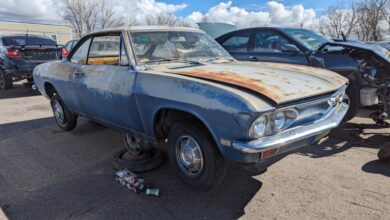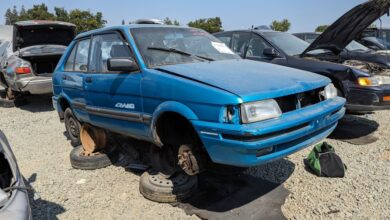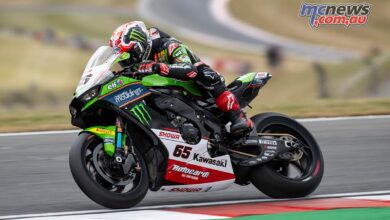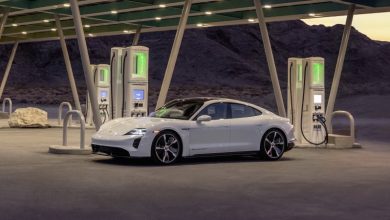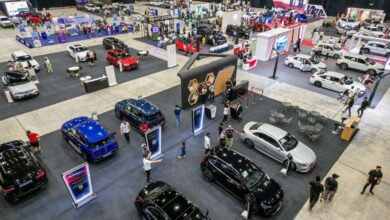2023 Porsche 911 Dakar exists because of an African race Porsche couldn’t win
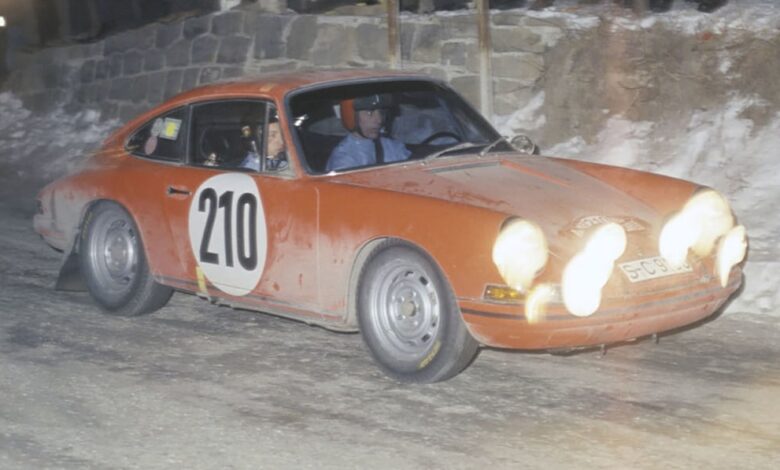
Why has Porsche debuted a new 911 Dakar? This isn’t Porsche hopping in on a trend, this is Porsche returning to a segment it created. Our guess on the timing is that the Stuttgart automaker has had a front-row seat watching off-road-focused builds mint stupendous amounts of money, so why not get back in with impeccable provenance and unmatchable brand equity?
It is certain the world hasn’t adequately appreciated the prowess and lore of Porsche 911s racing in the dirt. The Porsche 911 went into production in September 1964. The 911’s first factory-backed race was the Monte Carlo Rally, in January 1965, where it finished fifth. Privateers in 911s began winning rally championships as soon as 1967, and the #210 Porsche 911 T in the image above returned to the Monte Carlo Rally in 1968 and won. The co-driver was Herbert Linge, the same Porsche mechanic who helped the brand to a class win in the 1952 Carrera Panamericana in a 356. The butt-engined coupe’s liftoff oversteer, which would soon turn the Porsche Turbo into “The Widowmaker,” served as an Insta-Drift boon for rally drivers.
Casually, the jacked-up neun-elfers with mud-terrain tires and more fog lights than Newfoundland are called Safari Porsches. They didn’t spring from a marketing confab over weisswurst and breakfast beers, nor a tuner’s “What if?” Porsche birthed them with blood, sweat, and repeated, unsuccessful attempts to conquer a tiny corner of the African bush 51 years ago. So there were probably a few tears, too.
In 1971, factory engineers prepped five 911 coupes to contest Kenya’s East Africa Safari Rally. A ghastly event held since 1953, this was the bloodsport side of rallying. Little-known drivers dragged meek but indestructible grocery getters like the Volkswagen Beetle, Ford Anglia, and Peugeot 404 through more than 3,000 miles of terrain ready to disembowel a car and then follow that up with fang-toothed cleaners ready to disembowel the driver and co-driver.
Engineers at Porsche’s Werk I race shop started with the 911 ST and its 2.3-liter twin-plug flat-six making 240 horsepower, roughly 35 hp more than the standard 911 S. They added more oil capacity, put new gear ratios in the magnesium-cased transmission, and installed a 40-percent locking rear differential. Special dampers added four inches of ground clearance, for 10 inches in total. To meet the inevitable punishment, a reinforced bodyshell with wider rear flares carried a roll bar inside, bull bars front and back, skid plates, and strengthened jack and suspension mounting points. In the cockpit, lightweight seats mixed with Heuer stopwatches and a CB radio. Two spare tires and extra lights completed the metamorphosis. Auction house Gooding & Co says these cars were referred to as 911 ST or STR, the R for Rally, and around 16 are thought to exist today. They are listed in the rally results as the 911 S.
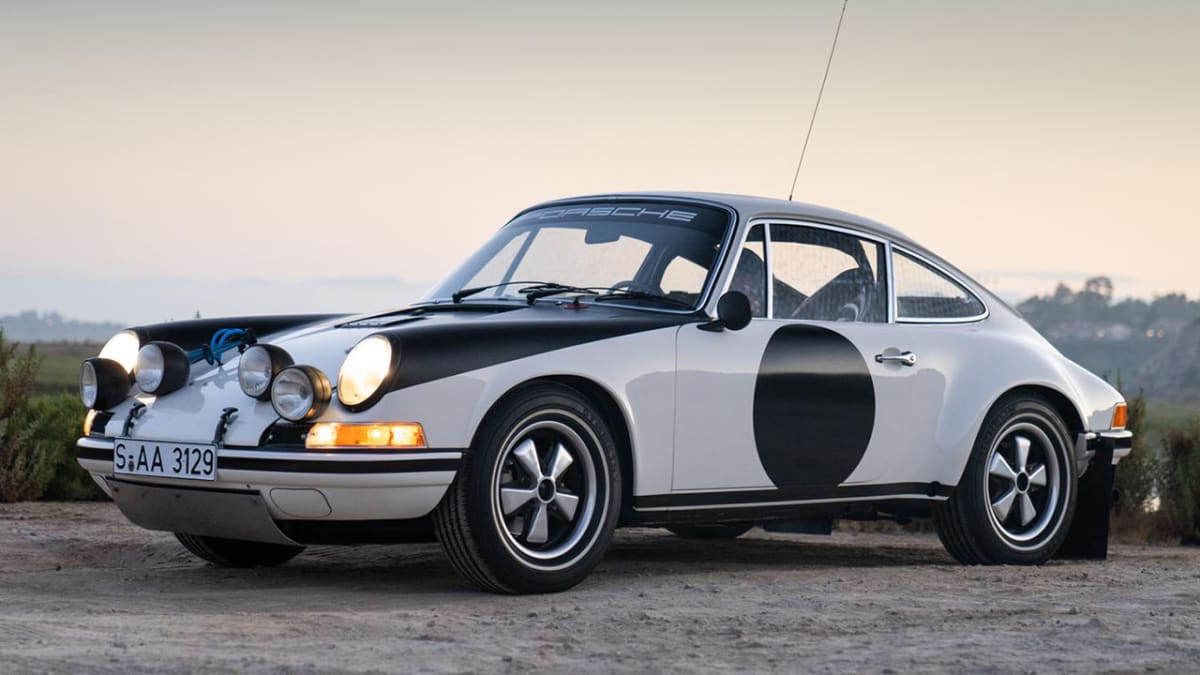
Because Sears ponied up money for the Safari tilt, at least one of the Light Ivory colored 911 STRs wore rebranded Sears’ white-striped tires (made by Michelin), and the hoods used Sears locks. Out of 100 entries in 1971, 32 cars finished. Sobiesław Zasada and Marian Bień raced their 911 to fifth.
For the 1972 rally, Porsche switched to its 911 2.7 RS, improving the car with about 300 upgrades and finishing second. Both Carrera RS 2.7s retired in 1973, then Porsche took another second place in 1974. In 1978, the motorsport department turned to the 911 SC, its engine upped to three liters, and finished second once again, one of just 13 cars to reach the flag.
In the 1980s Porsche created dedicated rally-goers in the 953 and 959, winning Dakar with the former in 1984 and going one-two with the latter in 1986, then giving up the dirt. Legendary sponsors Rothman’s and Martini were in the trenches with Porsche — literally — during this phase. So were super race team Prodrive and super racing driver Walter Röhrl. The Porsche 959 sprang from Earth’s mud and loam, and Porsche’s all-wheel-drive system sprang from the 959. But the East African races provided the “Safari Porsche” name.
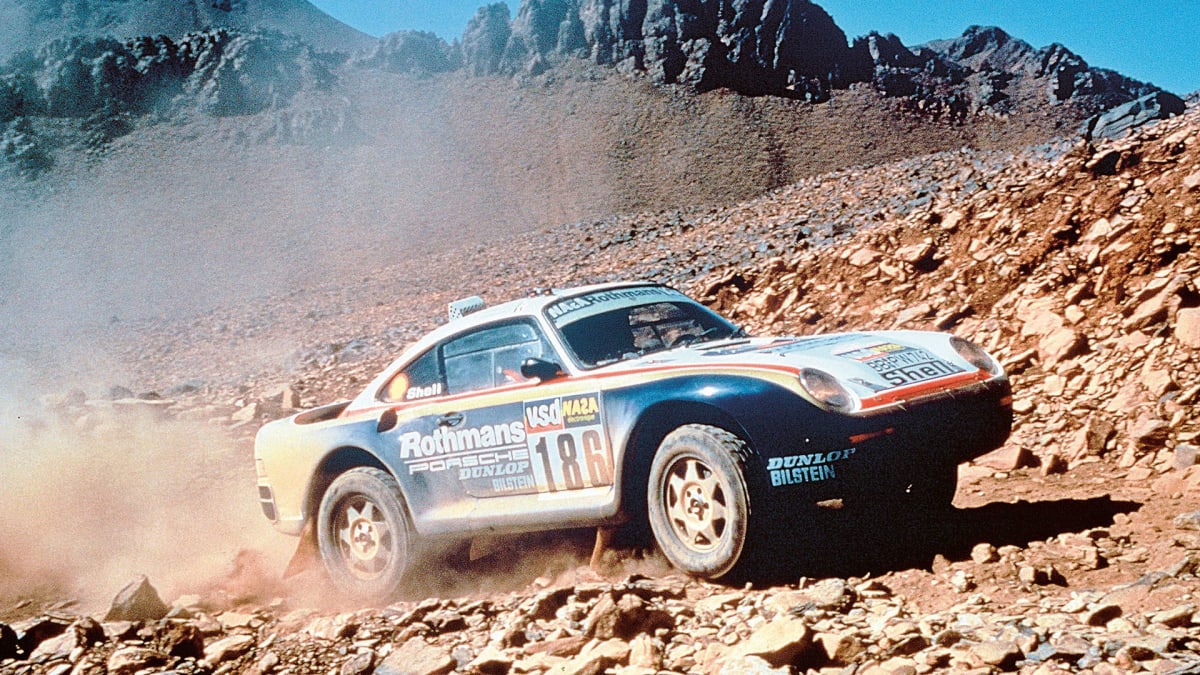
What’s made Safari Porsches the new hotness after giving up the bush in 1978? They didn’t disappear. International privateers never stopped campaigning the 911 in rallies, and owners in the 1980s regularly converted their daily drivers into World War Z grocery getters. This happened so often with the G-Body 911s, built from 1973 to 1989, that enthusiasts joked the “SC” in 911 SC stood for “Safari Car.”
England’s Tuthill Porsche has tended the flame of Safari 911 competition since the early 1980s. Francis Tuthill lived down the road from Dave Richards — the racing impresario behind Prodrive — around the time Richards was uniting Porsche and Rothmans to create the Porsche Rothmans Rally Team. Francis’ son Richard told us, “David Richards needed a show car and dad … had one. [Richards] said, ‘Can I buy your car?’ Dad said, ‘Of course … as long as I can paint it.'”
Francis began his foray into 911 rallying by hand-painting the Rothman stripes on Richards’ 911 SC RS competition cars. As Richards brought wrecked 911 racers back to England, Francis expanded his purview from paint to repairs, in the process learning how and where 911s broke when thrown into ditches and flown through the air. When historic rallying took off in the late Eighties and early Nineties, Francis decided to build a 911 for the 1993 London to Sydney Marathon car rally. He’d competed in the same event in 1977 — at 10,400 miles, the longest rally ever — in a Volkswagen Beetle, finishing 36th. In 1993, driving the 911 he built, he won. As Richard told us, “From that moment on, historic motorsport grew and the thing exploded and we were we were in the thick of it.”
Richard is specific about what “it” is, however. While the term Safari has expanded to describe any luxury vehicle given an apocalyptic-looking makeover, Richard limits the term to a G-body 911 with “a 3.0-liter engine, a 915 gearbox, a beautifully strong body shell, and very, very special dampers, suspension, shock absorbers and springs.” We’re sure Porsche uses its own definition of “Safari,” but Richards’ dedication to the source material could help explain why Porsche’s new car is called the Dakar — and it doesn’t hurt that Porsche won the Dakar.
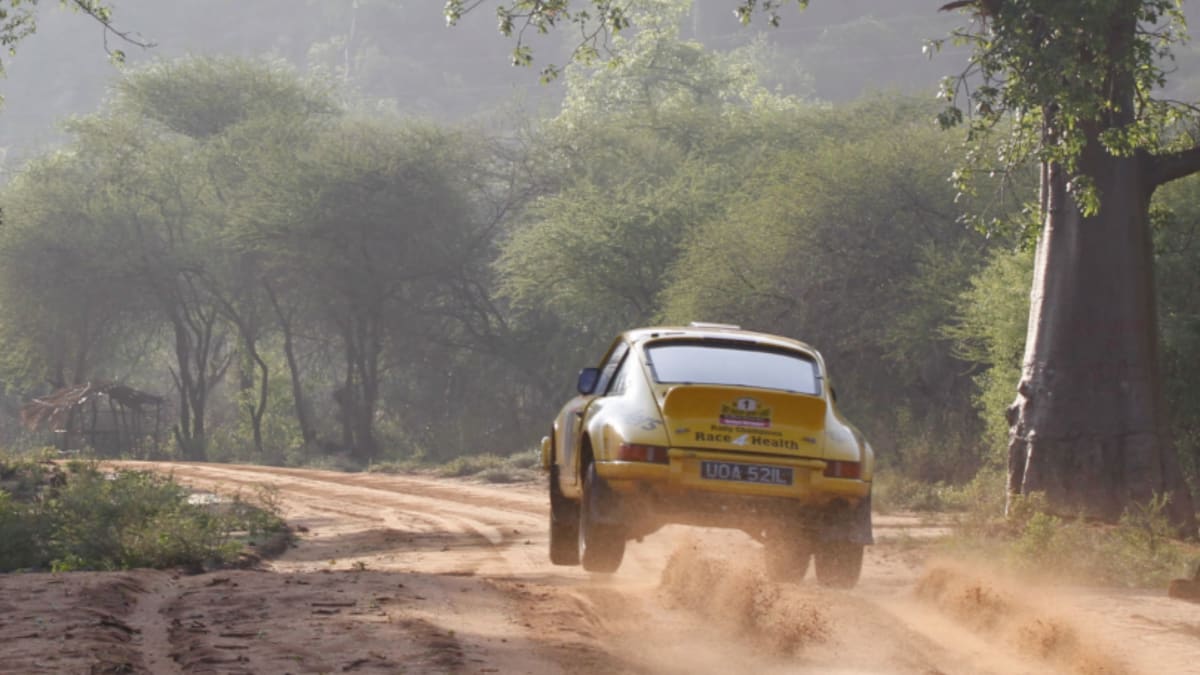
Although G-body cars lasted from 1974 to 1989 and all of them came with the 915-series four- or five-speed manual transmission, the 3.0-liter engine was only on the market from 1978 to 1984. Furthermore, Tuthill’s Safari cars — which are road-legal — are engineered for competition, which means mechanical adaptations found in few other Safari builds. During one rally, Tuthill team mechanics changed the engine and gearbox in a Tuthill Safari car in 13 minutes. Richard told us that given the right set of pro wrenches, this can be done with any of the company’s conversions.
They are also engineered to survive the African hinterlands at racing speeds. Only those who’ve been to Africa understand how boggling that is, hence the stiffened shell and voodoo suspension. He told us Tuttle spends 300 hours just on measures like seam-welding and over-plating. “That’s before you’ve done paint, before you’ve done anything.” Such time and fastidiousness are why Richard doubts many so-called Safari builds he’s seen could live up to the name. “This is no disrespect to anyone,” he said, but “none of those cars could actually do a Safari rally. They’d break.” He prefers to call such cars “Safari tributes.”
If you want to paint Richard as a curmudgeon beholden to a heyday and the family company, don’t. One, he respects the exploding American Safari tribute scene. “You guys have started it,” he told us, “and I might say ‘Thank you very much’ because it’s bloody good for us.” That’s an understatement, Tuthill lately doing even better with new forays like the Tuthill 911 K and 911 SC/RS restomods.
In the U.S., the past five years or so have seen custom builders snag more headlines with Safari builds. Why are they a big deal now? The oversimplified answer: enormous wealth. The Safari craze is fueled by the same profits that have put more new cars on sale in the U.S. costing at least $200,000 than there are cars under $20,000. Another few millionaires get minted every day, and money gets bored. Since so many among the “-aires” crowd have some flavor of showroom 911, they call someone who’ll bolt on a long-travel suspension down low and a shovel up high, and voila: the kingpin turns croc hunter.
The trend took decades to catch on here, though. Porsche North America made a soft introduction to the rally arts in 2000 when touting the coming Cayenne SUV. At the Porsche Parade in Sacramento, the domestic division showed two 911 C4S models in Safari kit, the duo dubbed Max and Petunia, and had actor James Brolin drive them across the Mojave Desert to the Grand Canyon.
Our market didn’t really take a stand on the matter until 2009. Chuck Moreland, the founder of Porsche suspension specialist Elephant Motorsports, said he got a call in 2009 from a man living in the Caribbean who wanted to fortify his 911 Turbo against the unpleasant island roads. Three years later, a customer walked into Wisconsin race and tuning shop Kelly Moss Road & Race and requested an overlanding 911. After breaking the seal on such builds, both shops told Autoblog they took the occasional order for more off-road oriented Porsches.
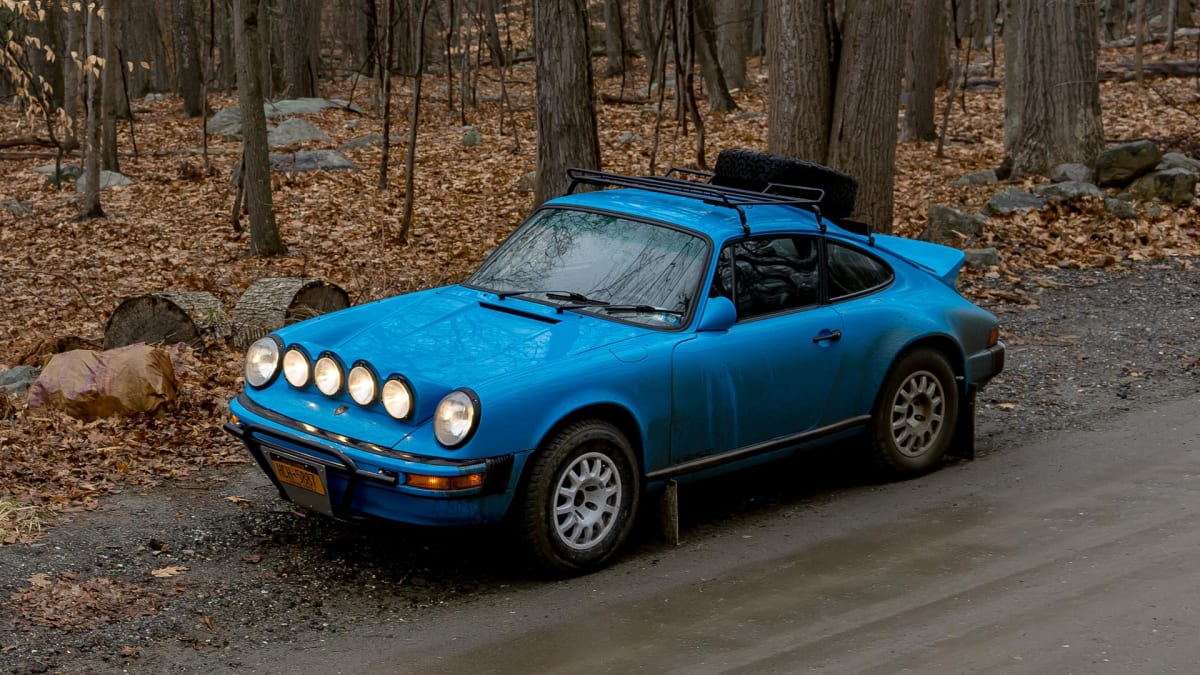
In 2016, our market cracked the nut. The year before, in Georgia, Porsche motorsport driver Leh Keen built his Keen Project Safari 911 as a personal challenge. Although he called it a Safari, he models his Carrera-based cars on Porsche’s 1984 Dakar-winning 953. After wide press coverage, his company The Keen Project has been booked with orders since. Also in 2016, the Porsche-loving impresarios at Luftgekult auctioned their Luftauto 001, which was soon followed by Luftauto 002.And on top of that in 2016, Oregon-based Rothsport began work on its first 964-series 911 for off-road racing in Baja. In 2018, the shop took a class win in the 2019 NORRA 500.
In 2019, the man who once fulfilled Singer’s welding needs, TJ Russell, whipped up his Russell Built Fabrications’ 911 Baja, following that with the 911 Baja Sportsman bolt-on kit earlier this year. In 2020, Wyoming builder Resolute Motorsports came down from the Tetons in its Overland 911, while German suspension gurus H&R headed into the Alps with the impossibly black Syberia RS. In 2021, Singer wowed with its All-Terrain Competition Study (ACS). The pilot doing the flashy driving in the promo vid? Richard Tuthill, whose company will build it if the ACS ever gets approved in quantity. And more Safari builds are being shaken out of the trees or dredged from water crossings. Famous German tuner Gemballa has a 959-aping Avalanche 4×4 concept in the works. The even-more famous German Porsche specialist RUF will not only be providing the engine for Gemballa’s car, but has already showed its 911 Rodeo concept.
The rising tide made its way back to Elephant Motorsports and Kelly Moss, too. Moreland does good trade selling Safari-specific suspensions, and told us he’s now in the custom built Safari business. Kelly Moss director of operations Andy Kilcoyne said, “I can’t build them fast enough.” So even though you’re far more likely to see Kelly Moss branding on GT race cars at places like a Porsche Carrera Cup weekend, the car on the Kelly Moss home page at the time of writing is a Safari 911.
This takes us back to the beginning, and the biggest name on the sidelines being Porsche itself. In 2018, Porsche sales and marketing chief Detlev von Platen said a Safari 911 “could be a good idea,” and floated the idea of a limited-edition model for retail. We thought little of it, because sales honchos ruminate out loud on such things all the time.
Clearly, he was seeding the ground. In 2020, as part of a behind-the-scenes look into its design department, Porsche revealed a drivable 911 Vision Safari concept from 2012, based on the 991-generation 911. It had been bulked up outside, stripped down inside, and tested on the same dirt and gravel paths Porsche used to prove the Cayenne and Macan. At the time, all we thought was, “What could have been….” Turns out it was this.
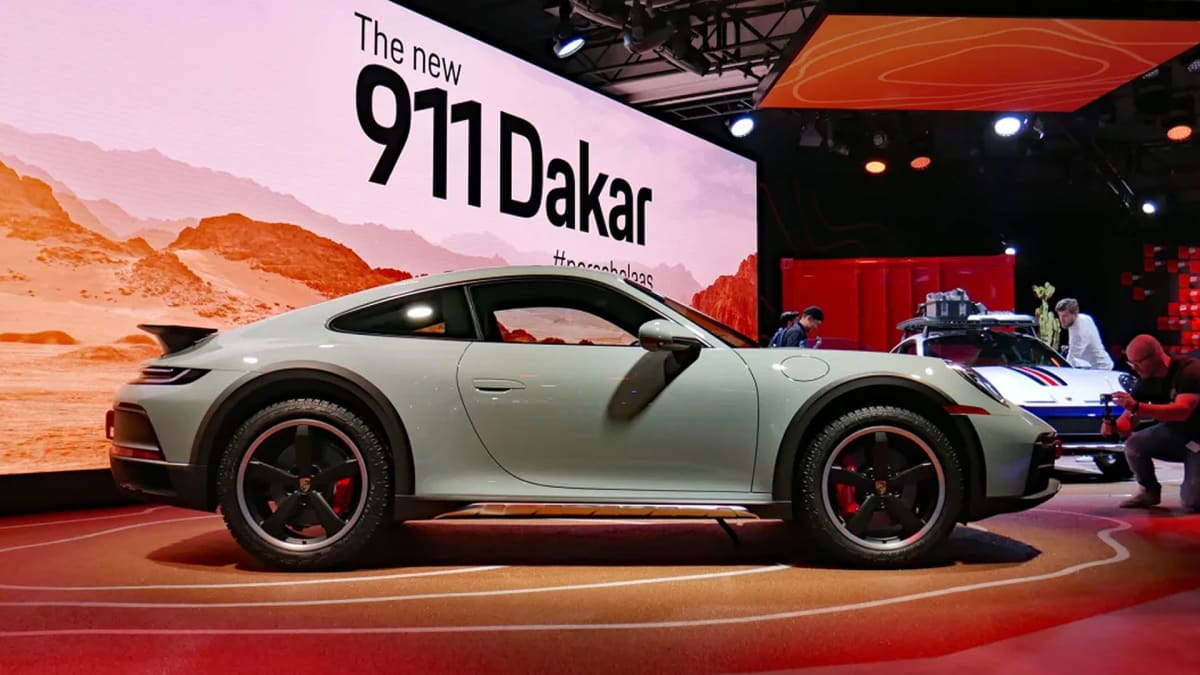
The 911 Dakar is a return to unheralded factory origins, this time with a bullhorn, a dealer army, a primed aftermarket division and massive amounts of consumer money. We’ve already lauded the latest and best-ever 911 in every guise we’ve tried so far. Now that Porsche’s taken the opportunity to transfer those accolades to the dirt and dunes, all Porsche needs to do is tell us which trailhead to meet at. It’s about to get faster, more crowded, and a lot more expensive in the backwoods.
